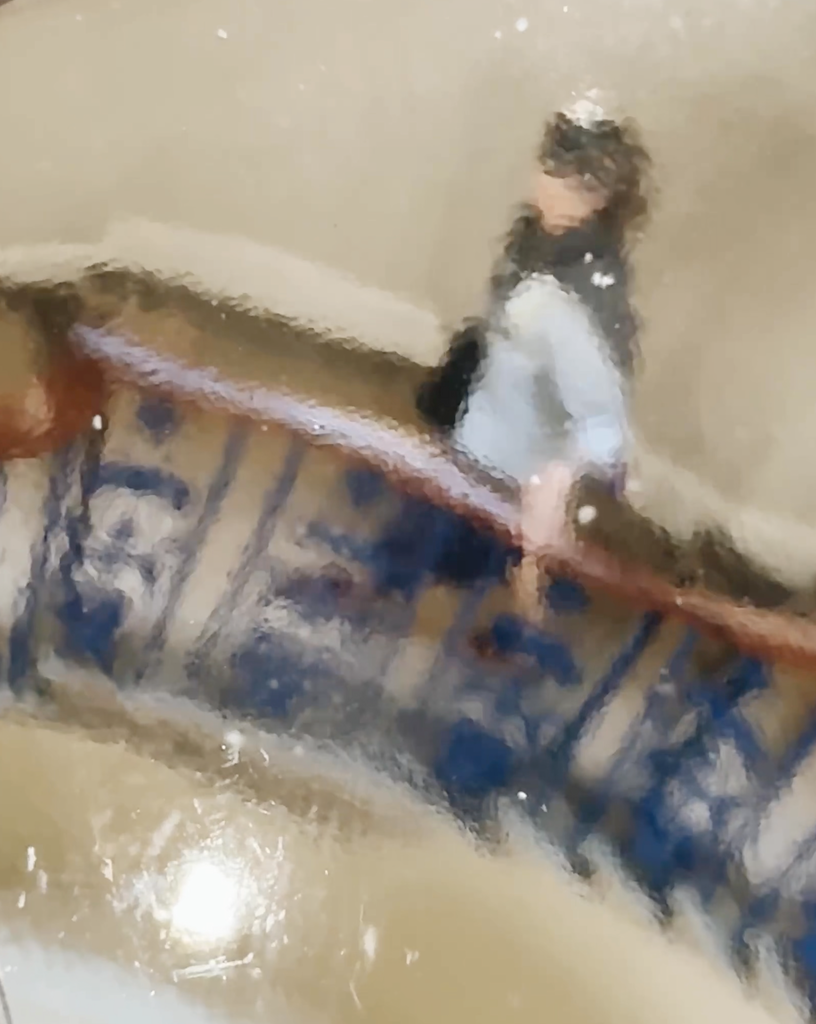Drawn from across the room, I found myself standing before a small Monet painting titled “Vase of Flowers” in a brightly lit gallery at the Courtauld, a London museum celebrated for its Impressionist and Post-Impressionist collections. Passing by van Gogh’s “Self-Portrait With Bandaged Ear,” Degas’s dancers, and Seurat’s fisherman, I felt my breath slow as I gazed at the artwork. My husband came over, and quietly I told him, “This is how I see things now.”
That year marked my experience of seeing the world through a blur. After discovering a small tumor behind one eye, I underwent surgery and radiation. While doctors assured me I would likely survive, they warned my vision in that eye would gradually fade—a small cost for continued life. Yet, the deterioration affected both eyes; my healthy eye seemed to mirror the afflicted one, possibly due to a rare condition called sympathetic ophthalmia. Slowly, the world softened and faded into a hazy blur. Faces became unrecognizable until close, and familiar streets turned confusing and intimidating.
I felt most unanchored in unfamiliar surroundings. During this London trip, a persistent dizziness unsettled me. I relied on walls for balance and cautiously tested curb depths before stepping off. Navigating the underground’s labyrinth of tunnels and escalators felt surreal, reminiscent of an M.C. Escher drawing. Once, rushing to catch a train, I boarded just as the doors closed, only to glance out at my husband’s worried face pressed against the glass. Unable to read station signs or know stops, I felt a fleeting but profound fear of becoming lost in the world. Thankfully, the doors reopened and he joined me.
Yet, there was Monet’s “Vase of Flowers.” This vibrant composition of mallows arranged in a mossy ceramic vessel was a work Monet began in the 1880s but set aside, finally completing it around 1920, six years before his death. The museum label described the viewpoint as evoking “a strange feeling, as if the table and flowers are tilting forward and the forms dissolving.”
To me, that sensation was entirely familiar, not strange. The world now resembled an Impressionist painting—soft, blurred, and fluid. Standing there, I found comfort in knowing that in this moment I was seeing the artwork much like any other visitor.
Monet himself struggled with cataracts and resisted surgery for years. A poem titled “Monet Refuses the Operation” by Lisel Mueller resonated deeply as my own vision declined. In it, Monet rebukes his doctor’s assumption that he desires clear sight, praising the beauty in blurred vision: “I tell you it has taken me all my life / to arrive at the vision of gas lamps as angels, / to soften and blur and finally banish / the edges you regret I don’t see.”
When Monet returned to complete “Vase of Flowers,” he was at the lowest point of his vision, in the midst of his cataract phase. (He eventually consented to surgery in 1923, three years before his death.) What inspired him to finish this painting? What sense of softness, acceptance, and appreciation of dissolving forms did he embrace? What readiness did he find to be at peace with being partially lost in the world?
Until that moment, I had yearned for the sharpness of sight I once took for granted, resisting being perceived—or perceiving myself—as fragile. I wanted to cross streets quickly, move confidently up and down steps, and leap onto trains. Yet, surrounded by Impressionist works devoted to capturing felt experience rather than precise reality, I realized for the first time since my diagnosis that I might be more than okay with my changing vision. We come to understand that beauty is fleeting and fading is inevitable. As I stood in that gallery before “Vase of Flowers,” the harsh and noisy world softened and faded. I felt no regret for no longer seeing its sharp edges.


0 Comments
No comments yet. Be the first to comment!